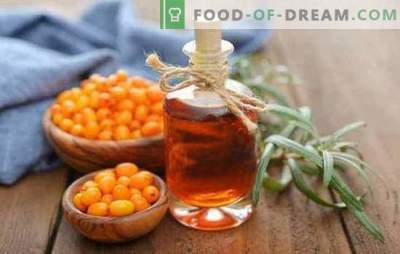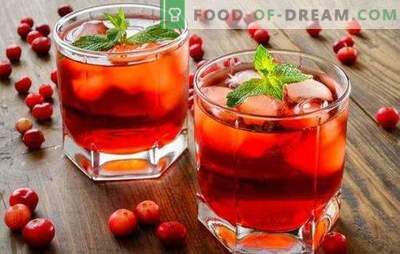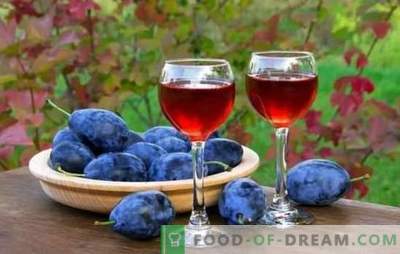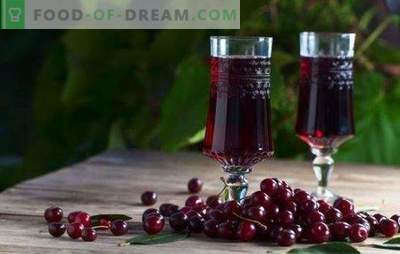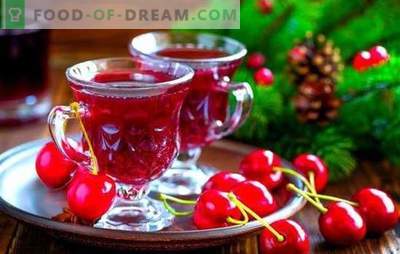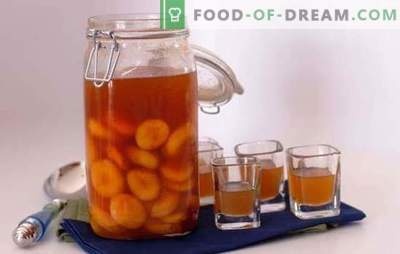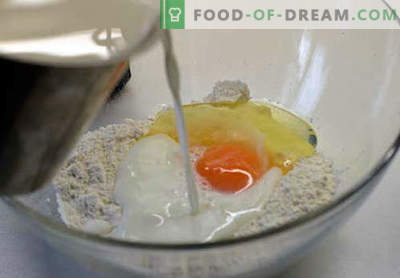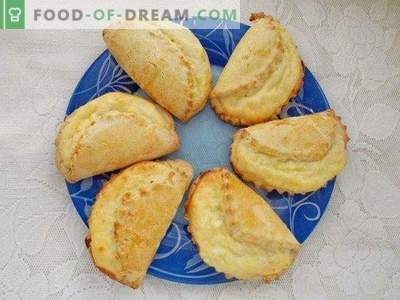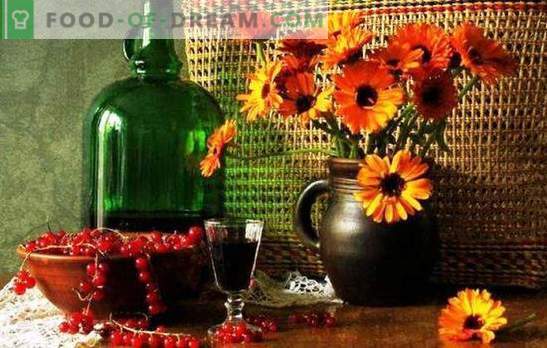
Summer is fleeting.
In any case, in the middle latitudes, where currants chose their “permanent residence”.
The desire to preserve the “piece” of summer in all its variety of paints in the form of winter blanks is most typical of our people.
With the advent of vodka in Russia, the idea came to spirituate berries.
Initially, fruit liqueurs were prepared by sorcerers, medicine men and healers, but very quickly such tasty and intoxicating ideas “went to the people”, acquiring new specific details in the preparation process, consisting mainly of local ingredients.
Of course, recipes for all sorts of tinctures are known to people for thousands of years.
In ancient China, Rome, Egypt and Greece, tinctures with herbs and roots were prepared. But it was the berry tinctures that became a new stroke in the world range of extracts, like the traditional “Russian vodka”.
Having slightly continued the introductory part, we note that grapes and winemaking, due to their climatic affection and complete lack of breeding experience, came to the life of our ancestors much later.
So it happened!
Wine and vodka were brought to us from Europe in the sixteenth century, and then, as usual, Russians were accused of vodka - their invention and main predilection. Although, in fact, the word “vodka” is a derivative of the word “water.” It was on the water that our witches prepared their first healing potions, but they quickly realized that spirit tinctures are stored longer and have, besides, a lot of other equally useful properties.
Currant tincture - basic technological principles
The main idea of the preparation of alcohol tinctures is to maximize the extraction of useful plant components.
It is known that alcohol or alcohol-containing liquids are solvents, like water, and even vegetable oil. Each of these solvents in its pure form has certain physical properties that are used in the preparation of tinctures.
Alcohol for the preparation of tinctures is used both in a “clean”, undiluted state, and in the form of an aqueous solution. For fruit tinctures, it is permissible to use such alcohol in combination with natural fruit juice. The ratio of alcohol and juice (water) in each recipe may be different, depending on the requirements for the finished product. Under the requirements for infusions, it means the content of alcohol, sugar and natural fruit component (juice) in percentage terms. These components also form the basic taste of alcoholic beverages in this group. Further, the issue of the preparation of tinctures significantly expands and is already related to the topic of the beverage assortment, even within one type of raw material.
For example, a currant tincture on vodka can be prepared weakly (18-20%) or strong (from 20 to 55%), and for preparing balms-currant liqueurs with alcohol - up to 60% alcohol content. To liqueur on currants on vodka, with low and medium alcohol content, can be attributed to the liqueurs and liqueurs, which have in many respects similar preparation technology.
Infusions - as a rule, low-alcoholic, sugar-containing alcoholic beverages resembling fortified wine. Sweet and semi-sweet, as well as semi-sweet low-degree tinctures also resemble the listed beverages to taste, but differ in the method of preparation. For the latter, ready-made juice is more often used, which is blended with alcohol, with added sugar or syrup.
Liqueurs in comparison with liqueurs and tinctures contain a much larger amount of sugar (25-60%) and their strength can be from 17 to 45%.
Strong tinctures have a similar preparation technology. Actually, the distinction between liqueurs and sweet infusions consists in their origin, because liqueur is a Western European invention, and its name has, accordingly, Western European origin (liqueur (french) - liquid).
For multi-component tinctures can be completely attributed to the balms, which, as a rule, do not contain sugar, or contain it only in the range of 0-7%. Their strength varies from 40 to 60%.
So, let's sum up:
- In terms of sugar content, bitter, semi-sweet, sweet and dessert tinctures are distinguished. The latter is a slightly alcoholic alcohol juice. Dessert tinctures contain a small amount of sugar (up to 20%), but at the expense of low alcohol content they seem very sweet.
- Home-made currant tinctures do not necessarily have to comply with the product classification, because the GOST home master is not a decree if the drink is prepared for personal use. Add as much sugar as you like.
The strength of tinctures ranges from 17 to 60% and above, when it comes to medicinal tinctures, extracts used in the food industry, when extracts based on pure alcohol are used to flavor products.
- You can use not only alcohol, but also vodka, well-cleaned moonshine, and, in some cases, strong liqueurs, balms, brandy, rum, brandy.
- The most important component of any tincture, which forms its taste, aroma and color, is vegetable raw materials, for which there are no restrictions for choosing which home-made production of alcoholic beverages, and everyone can show their creative abilities in compiling a range of beverages.
To obtain tinctures, you can use dried or frozen currant berries, concentrated juice or syrup, jam, jams. Often berries and black currant leaves are used as a flavoring in combination with other, less fragrant berries.
The main method of preparation of tinctures - maceration (insistence). In addition, from the possible options for preparing tinctures in industrial production, at home, you can apply the method of vortex extraction, which allows to obtain the highest quality alcohol extract. For example, for this purpose, a stationary blender with a bowl, in which the extracted raw materials can be placed together with alcohol, is suitable from household kitchen appliances. Moreover, with this method, currant berries are crushed, which allows to improve the quality of the product, which is better saturated when the alcohol penetrates into the smallest particles of raw materials.
From the popular old-fashioned methods of preparing “Russian vodka”, a good option is vodka-casserole. The essence of this method of preparation of tincture is pasteurization of the future tincture. Heating the alcohol in which the ground raw material is located allows you to speed up the extraction process and get a more saturated product. But when using this method, it is important to remember that alcohol evaporates when heated. To prevent this from happening, the container with all the components of the tincture placed in it is sealed, coated with a thick layer of dough or clay, then the vessel is placed in the oven in this form, heating it periodically to 80-90 ° C. After 48 hours, you can print out a fully cooled vessel and proceed to the filtration stage. Some modern ovens are able to cook or reheat food while working on high-frequency radio waves. If there is such a stove on the farm, note that in the industrial production of tinctures and their maceration, ultrasound is used. Such ovens are able to recognize products in a sealed form and independently select the temperature for their heating, and such equipment in the house is a godsend for making tinctures.
Recipe 1. Strong currant tincture - extract for dough products and desserts
Composition:
- Alcohol (93.6%) 0.5 L
- Currant, black 500 g
- Currant leaves, fresh 200 g
Cooking technology:
Wash berries and fresh black currant leaves and lightly dry them. Cut or tear the leaves. Put the raw materials in the bowl of the blender and pour in the alcohol. Turn on the blender and, gradually increasing momentum, beat the contents of the bowl. Pour the mass into a glass jar and close it tightly to prevent alcohol from leaking. It is desirable that the tank was filled to 3/4 volume.
Pour into a large pot of water, put a jar in there and warm it up without boiling. The maximum pasteurization temperature is 70-80C. After cooling the water in the pan to 40 ° C, repeat the heating 5-6 times. Leave the jar closed for 72 hours. After take a clean and dry bowl, pour the contents of the jar on the sheet and squeeze it over the bowl. Pour the extract from the bowl into a clean jar and seal tightly. Allow several days and filter again if necessary.
Prepared currant tincture with alcohol can be added to sweet and meat dishes, sauces and pastries to improve the taste. In a similar way, you can prepare a fruit extract from other fruits.
Recipe 2. Sweet currant tincture on vodka
Composition:
- White currant 1 kg
- Sugar 1.5 kg
- Cherry, yellow (without stones) 800 g
- Vanilla 15 g
- Vodka (40%) 2.1 L
Cooking technology:
Wash berries and reassemble, removing spoiled. Put the berry mass in the bowl of the blender and, choking with sugar, chop it thoroughly. Transfer to the bottle and fill with vodka. Add the vanilla. Hold until sugar crystals are completely dissolved. After 20 days, filter. Pour off the tincture of the tincture again in a clean jar and, after closing it, place it in a dark place for storage. Check the tincture periodically. If a precipitate appears, repeat the filtration, after which it can be bottled. The tincture can be consumed after 3 weeks after the maceration field, but its taste and color will not really form before half a year: it will acquire a pleasant golden color, a richer taste and a slightly stretching liqueur texture.
Recipe 3. Bitter currant tincture with alcohol
Composition:
- White currant (juice) 1.2 l (± 2 kg of berries)
- Cornflowers, blue (flower petals) 200 g
- Sugar 140 g
- Alcohol (96%) 0.6 L
Cooking technology:
Flower petals fill with alcohol and insist at least 3 weeks. To speed up maceration, you can apply one of the methods described above. To get more juice from currant berries, sort it out, chop it with a blender and add sugar.
Use a non-metallic container to avoid oxidation of the product. Having kept mashed and sweetened berries for 3-4 hours, wipe them through a fine sieve or wring out with a press.
Pasteurize juice at a temperature of 90 degrees for 20 minutes. Oilcake pour spirit of blue cornflowers, close the jar with a lid and soak for 24 hours, shaking the contents of the jar periodically. Filter the alcohol tincture and add to it cooled pasteurized juice. Stir and pour the beverage into bottles. Tincture is better to withstand at least 10-15 days for the final formation of taste.
Recipe 4. Currant, raspberry and tea rose tincture
Composition:
- Hibiscus petals, dry 50 g
- Red currant berries 1.0 kg
- Raspberry 400 g
- Sugar 600 g
- Vodka (45%) 1.8 L
Cooking technology:
Prepare the tincture in advance of vodka and tea rose petals, keeping the hibiscus on vodka for at least 3 weeks. Filter tincture. Chop fresh berries with a blender or other household appliances.
Fill the berries with sugar and hold them until a rich separation of juice, boil until boiling. Transfer the mass into the bottle, fill with vodka infused with hibiscus flowers. Stir and close the lid. Insist two weeks, filter and bottle, making sure there is no sediment.
Recipe 5. Currant tincture on mountain ash vodka
Composition:
- Redcurrant juice, frozen 500 g
- Sugar 0.5 kg
- Tincture, Rowan (40%) 1.0 L
Cooking technology:
Place a briquette of frozen juice in an enamel pan. When it melts, add sugar and boil the syrup until thick. Pour the vodka into the cooled syrup, stir and pour it into the prepared container. Soak the prepared tincture for at least a week so that the smell of vodka and fruit syrup merges into the overall composition.
Recipe 6. Medicinal tincture of currants for alcohol
Composition:
- Redcurrant (fresh berries) 1.8 kg
- Thyme (dried grass) 100 g
- Oregano 80 g
- Oak Bark 40 g
- Sugar 700 g
- Water 0.5 L
- Alcohol, undiluted 0.75 l
Cooking technology:
Prepare the currant: sort and wash the berries. Rub them through a sieve into squeezed juice, pour out the sugar and boil to a stretching consistency. Cake mix with chopped grass and oak root. Put in a thermos and pour boiling water over it. Leave for a day to insist, then drain the liquid, squeeze the thick. Infusion pass through the filter, combine with berry syrup and alcohol. Mix, cork in a glass container and soak for at least 10 days.
This tincture treats throat and cold, restores strength.
Currant tincture - tips and tricks
- The shelf life of alcohol tinctures is longer than that of infusions that do not contain alcohol, but nevertheless, the rules of storage should be observed. Remember that despite the use of fruit liqueurs as an aperitif, they initially have a healing effect, and every medicine has terms and conditions of storage.
- Fruit tinctures prepared under industrial conditions should be stored for no more than two years. Similar homemade drinks should not be stored for more than a year, given the lack of special equipment for their manufacture.
- The ideal packaging for storing tinctures is dark glass. In no case do not use plastic bottles for storage, metal flasks subject to oxidative processes. The beverage during storage must be hermetically sealed. If you find turbidity tincture or the appearance of a precipitate at the bottom of the tank, abandon its use.



